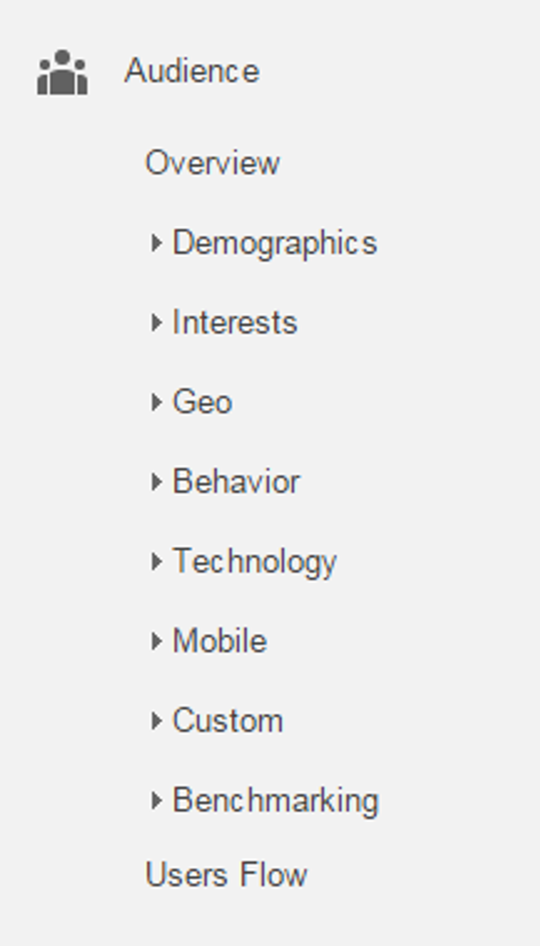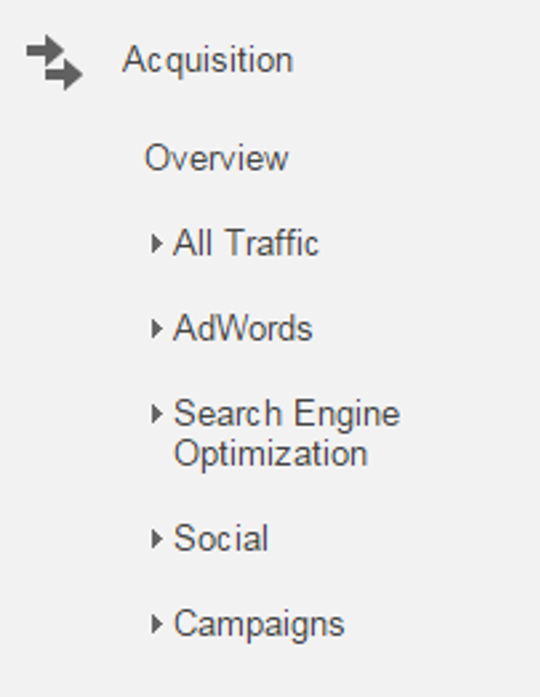Understanding how users get to your site can help you define where you should be allocating your marketing dollars, and can help define which products or services are best advertised through certain channels. The best way to start doing this is to start loading in your cost data for various channels to start seeing what impact that has on conversion performance.
The understanding and allocation of this “return distribution” has helped us increase overall revenue for a client by 70% this December vs. the previous period for paid search advertising.
Behavior
What did they do when they got to my site?
Behavior data gives you the lowdown on what users are doing when they get to your site. The data is presented through several different vehicles, but all helps to allow you to understand what it is that users are reading, watching, interacting with, or searching for. If users have to do many repeat searches for a certain keyphrase on your site, it’s likely that you need to tweak your search filters. If users are landing on a page and bouncing at a high rate, you can investigate the speed of that page to decide whether it is optimized for the user process.
Alternatively, events can be measured as “touch points” for different engaging features on a page. You can use these as intermediary steps on a page to help reduce bounce rate. It’s important to record hits to a site in the way you expect users to behave on it. Creating custom events or virtual pageviews becomes much more valuable.
In a recent situation we encountered, a client was unable to visualize the end stage of a goal funnel due to a page not being generated from the end of a step. We were able to create a virtual pageview on the successful “thank you” message returned and create a filter that helps this client understand how people interact with the conversion funnel.
Conversion
Did they do that thing on my site I wanted them to do?
The most critical question you need analytics to answer? Yep, it’s that really eloquent one up there in italics. Conversion means many different things to many different sites. It can be a lead, a lengthy pageview, a purchase on your site, or an interaction with content. The conversion section is all about conversion funnels, ecommerce data, multi-channel funnels, and attribution modeling. It’s a very powerful section of analytics when used properly. I prefer to recommend that businesses break out their macro and micro conversions in different views and/or even by different internal team objectives. Always reduce the noise.
Another good tip, don’t fall into the “create a funnel for the sake of creating a funnel” bandwagon. If you don’t have a process, you are requiring users to go through to hit the end goal, you don’t really have a funnel. A funnel is really to help you understand when you’ve asked the user for too much information before they’re willing to continue. I like to think of registrations, applications, checkout processes (use enhanced ecommerce...it’s awesome), or questionnaires, among the many potentials.
We continue to analyze these various funnels with clients in order to help them understand where we can alter the information delivered to users to retain many of them through the funnel. In one case, we were able to match conversions in a client’s funnel to around 1% of backend system recorded leads, making their funnel data highly actionable in reducing friction points.




Analytics
About the author
Dan Kipp
Dan Kipp is the Google Analytics and Google Tag Manager guru at Marcel Digital. He loves traveling, cooking, sports, and spending spare time with friends and family.